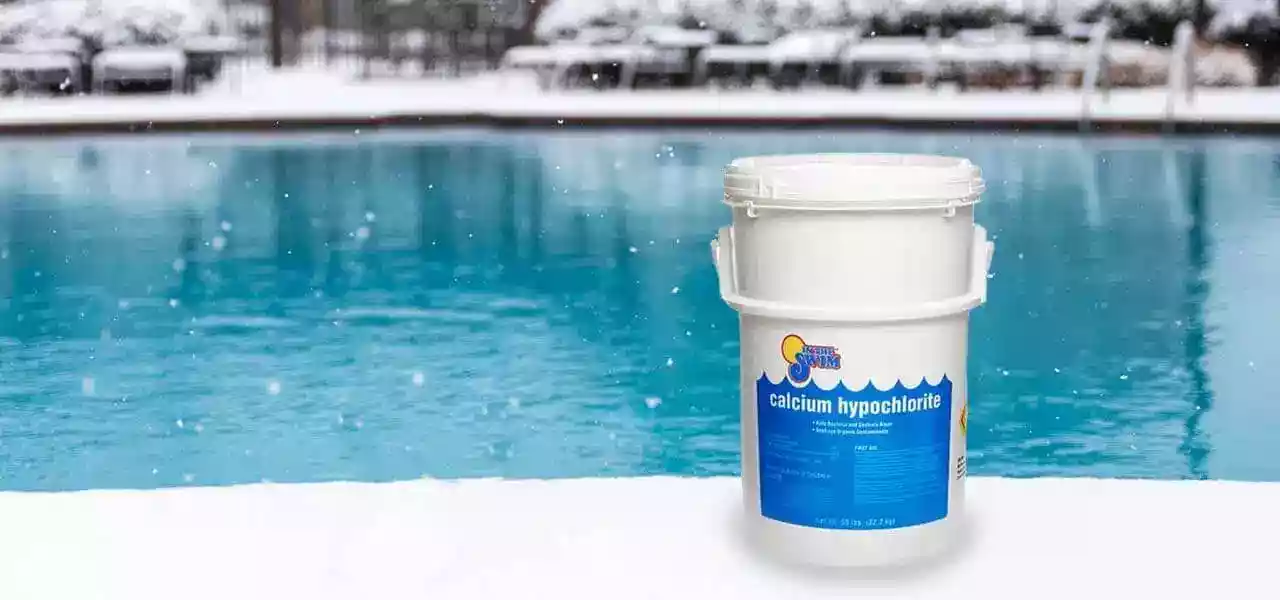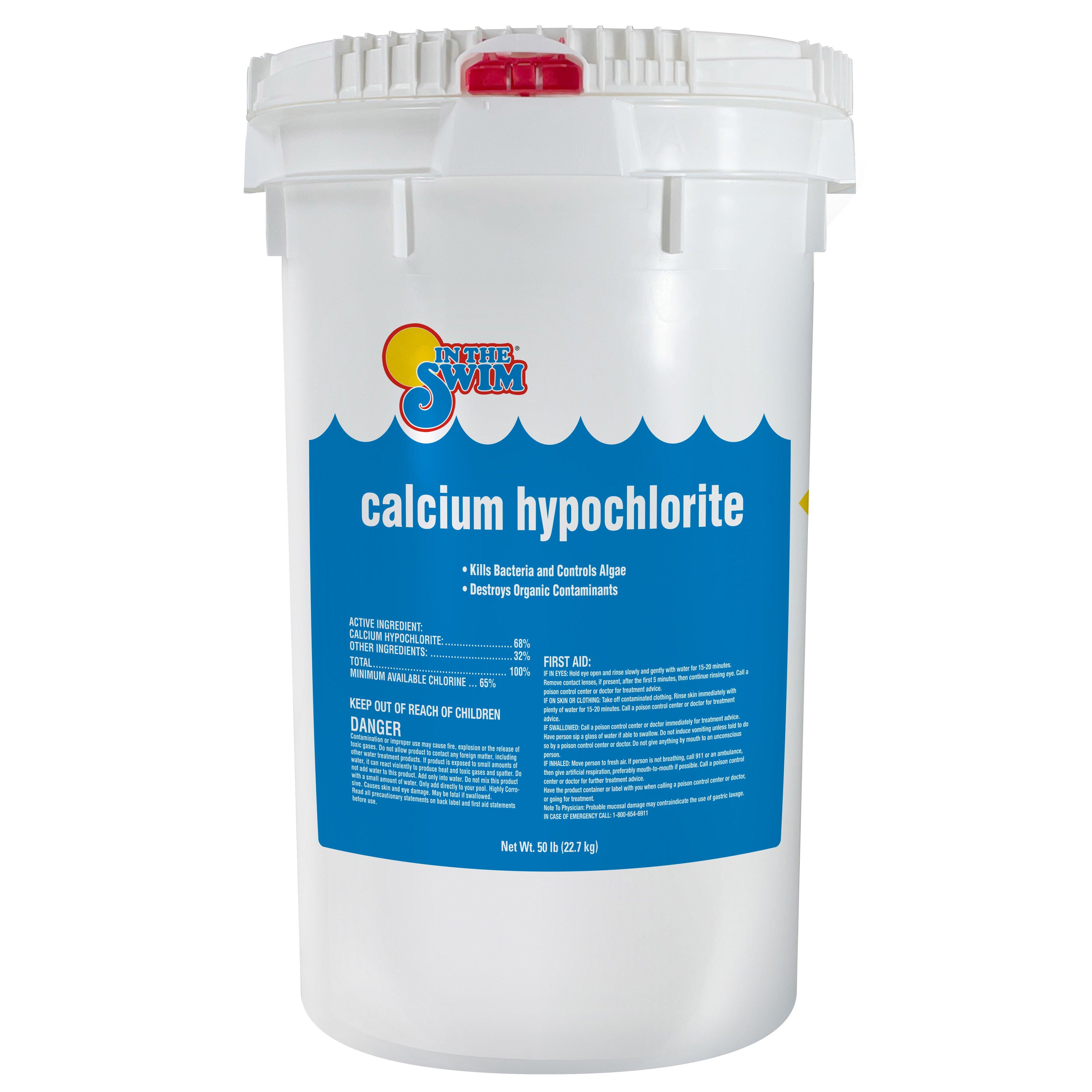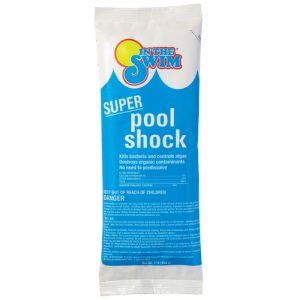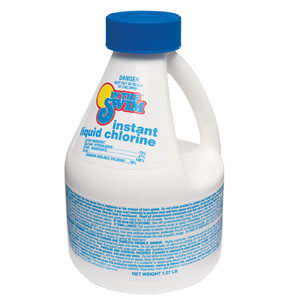FREE Standard Shipping On All Orders $100 or More!*

Calcium Hypochlorite: Winter Pool Shock
Today we will look at the ways to use calcium hypochlorite pool shock in your pool, and specifically for winter use in colder temperature water. Calcium hypochlorite, also known as cal-hypo, is a granular-powered chlorine product made by joining calcium and hypochlorite ions in an aqueous solution. Crystals of salts form, and are quickly separated and dried to produce a soluble form of powdered chlorine.
In The Swim offers three different cal-hypo products: Pool Shock, Super Pool Shock and Instant Liquid Chlorine. Let's dive into each product and discuss how they benefit your pool!
The Three Types of Calcium Hypochlorite Products
Shocking your pool during swim season is one of the best ways to keep your pool clean and healthy. But do you still need to do it during the winter, off-season months? Yes! Using calcium hypochlorite pool shock during your pool's winter hibernation is just as important as during the toasty summer months.
Pool Shock 
Our regular strength calcium hypochlorite shock is 68% available chlorine. This means 68% of each pound of pool shock is calcium hypochlorite ions. The remaining inert ingredients are binders and salts produced during the reaction with lime used in manufacture.
These binders release and dissolve within 15 seconds, in 70°F pool water. In a winter pool, colder and uncirculated, it can take twice as long to dissolve. It's always best to pre-dissolve calcium hypochlorite.
To dissolve calcium hypochlorite, pour 1-2 lbs of the pool shock into a clean 5 gallon bucket full of water. To prevent a volatile reaction, always add shock to water, not water to shock. Stir it with a suitable instrument for 15-30 seconds, depending on the water temperature. Pour it into the pool, but before it's completely empty, stop pouring and fill the bucket with pool water. Stir again, and then pour in the remaining solution.
Super Pool Shock
Super Pool Shock is our enhanced strength form of calcium hypochlorite. By boosting the reaction time during manufacture, we increased the strength of the product to 73% available chlorine, reducing the inert ingredients to 27%.
Super Pool Shock is not only a stronger form of calcium hypochlorite, but the smaller crystal size allows the granules to dissolve at a quicker rate. Super pool shock will dissolve in 8 seconds, in a circulating pool of 70°F water. The rate of dissolution doubles when water temperatures fall below 60°F.
With fewer binders to separate, Super Pool Shock also has the advantage of being cleaner to use. Less pool shock binders to separate, and a lower contribution to calcium hardness levels in the pool water, compared to our regular strength calcium hypochlorite products.
Instant Liquid Chlorine
By modifying our reaction time and drying process further, we were able to create a new product recently, which we call Instant Liquid Chlorine. Think of it as a form of dehydrated liquid chlorine salts. The granules formed are even smaller than our Super Pool Shock, and are programmed to rehydrate within 2 seconds, upon being added to water.
The best thing about this dry liquid chlorine formula is that it dissolves rapidly, even in cold water temperatures. We've packaged it in an easy to pour bottle, just walk it around the pool - no need to pre-dissolve.
Winter Pool Shock
Any of these calcium hypochlorite products can be used for winter pool chlorination, by dosing at a rate of 1 oz. per 5,000 gallons of pool water. This should last for 3-4 weeks in a covered and closed pool.
Uncovered winter pools with water temperatures below 60°F should add a double dose, and depending on the sun exposure and temperature, will lose their chlorine residual in half the time, or within 7-14 days.
There is usually no need to shock a winter pool with large amounts of cal-hypo if water temperatures are below 60°F. Simply use enough to maintain a residual of 1-2 ppm of free chlorine. AND REMEMBER that winterized pools can't use the pool pump to help distribute chemicals throughout the pool. To avoid any problems caused by "hot spots" or concentrated areas of chemicals, it's important to agitate the water with a pool brush or submersible pump to help the products incorporate with the water and move them throughout the pool.